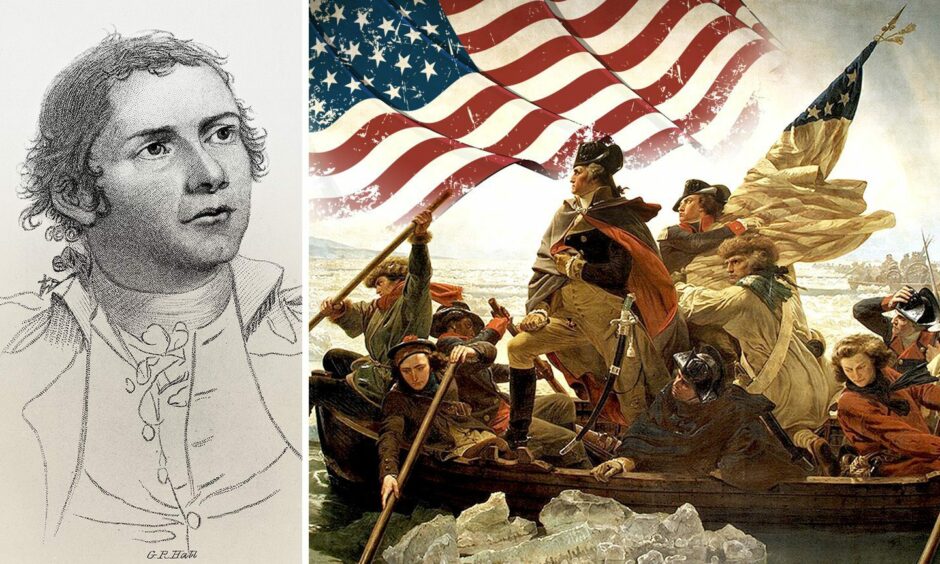
A recent visit Stateside brought Jacobite historian and author Maggie Craig face to face with a familiar name.
It was the name of a house in Savanna, Georgia — The Mercer-Williams House.
It was the Mercer part that rang a bell, and Maggie realised there must be a connection with a hero of the American War of Independence who hailed from Aberdeenshire, Brigadier General Hugh Mercer.
Mercer was an army surgeon who had served with Lord Pitsligo’s army on the losing side at the Battle of Culloden.
Maggie knew he had managed to flee to Leith, where he sailed to Philadelphia arriving there, after much privation, a year after Culloden.
But there his Scottish story ends, almost forgotten in his native land.
In his adopted America, he’s the stuff of legend, and far from forgotten.
A town and nine counties in the US are all named after him.
There’s a statue to him in Fredericksburg Virginia, and the grand house he commissioned in Savanna still bears his name.
He even features in song. If you’re lucky enough to catch the musical Hamilton as it tours the UK over the next couple of years, listen out for a mention of ‘good ol’ General Mercer’ in that famous song ‘The room where it happens.’
He has famous descendants, including singer/songwriter Johnny Mercer, and General George S Patton Jr, considered one of America’s greatest battlefield commanders.
Maggie put two and two together and realised that the Jacobite son of the manse who served at Culloden and the Mercer named on the museum sign were one and the same man.
Father was minister in Rosehearty
Hugh Mercer was baptised in 1726 at Peathill Kirk near Rosehearty, where his father was the minister.
A bright lad, he began studying medicine at Marischal College, Aberdeen University aged 15, graduating four years later with an MA.
As history pivoted towards the fateful events of 1745, Mercer was apprenticed in Fraserburgh to a Dr Cruickshank.
Maggie said: “This may be the same Dr Cruickshank who acted during the ’45 as personal physician to Alexander Forbes, 4th Lord Pitsligo, whose home of Pitsligo Castle was no distance from the manse where young Hugh had grown up.
“Lord Pitsligo was a loyal Jacobite, so it’s no surprise that when Charles Edward Stuart landed in Scotland in the summer of 1745, despite being 67 years old and a chronic asthmatic, Pitsligo was ready and willing to rally to the Stuart standard.
“Thirty years before, he had been out in the ’15, fighting at the Battle of Sheriffmuir.”
Mercer joined Lord Pitsligo’s Regiment of 200 gentlemen and their servants, listed in the Muster Roll as a surgeon.
The regiment set off for Edinburgh to join Prince Charles Edward Stuart at Duddingston, whence the Jacobite army marched to England to fight at Manchester and Derby before retreating north via the Battle of Falkirk to Culloden.
By now Hugh was well used to being in the midst of battle, experience which would later see him rise to the top in a career which veered from medical to military.
But for now, he enjoyed a rare period of peace, and set up a medical practice in a town now called Mercersburg in Franklin County, southern Pennsylvania.
Maggie said: “ He became a close friend of George Washington.
“The two men met in 1755 during the French and Indian War, in which Mercer served as both a surgeon and a soldier, fighting for the army he had fought against during the ’45.
Wounded in Pittsburgh
“They were together at Fort Duquesne, modern day Pittsburgh. In this war, different Native American tribes allied themselves to either the French or the British side.
“At one stage, after a raid on an Indian village, Hugh Mercer was wounded, a musket ball breaking a bone in his arm.
“He was separated from his unit, alone in hostile territory and had to walk 100 miles back to safety.”
Maggie tracked down a piece in The Pennsylvania Gazette which launched Mercer on his trajectory to celebrity.
‘We hear that Captain Mercer was 14 Days in getting to Fort Littleton. He had a miraculous Escape, living ten Days on two dried Clams and a Rattle Snake, with the Assistance of a few Berries. The Snake kept sweet for several Days, and, coming near Fort Shirley, he found a Piece of dry Beef, which our People had lost, and on Trial rejected it, because the Snake was better. His wounded Arm is in a good Way, tho’ it could be but badly drest, and a Bone broken.’
A taste for rattlesnake
Rattlesnake apparently tastes like turtle or frogs’ legs, is high in protein, low in fat and full of vitamins.
Encouraged by George Washington, Mercer settled in Fredericksburg, Virginia, and married Isabella Gordon, with whom he had five children.
Wife from Pitsligo
She came originally from Pitsligo, Aberdeenshire, and was the daughter of John Gordon, a prosperous tavern owner.
There Hugh became a respected family doctor and apothecary, with a recreation of his shop still to be seen in Fredericksburg today.
He spent his time amid illustrious company, people who would go on to shape the USA that we know today.
Maggie said: “He and Washington were members of the local masonic lodge and also part of a group which met at The Rising Sun tavern, where the talk was of revolution, what the revolutionaries themselves initially called ‘the dispute with the Mother Country.’ No taxation without representation. The Boston Tea Party and all that.
“One of those who gathered round the fire at The Rising Sun was John Paul Jones, father of the American Navy and also a Scotsman, originally from Kirkbean in Galloway.
“He later became a Rear-Admiral in the Russian Navy.
Refused to submit to ‘the tyranny of Great Britain’
“When it came to war, Mercer said he would rather go beyond the mountains and live with the Indians than submit to the tyranny of Great Britain.
“He was made a colonel and considered to have great talent when it came to military strategy.”
The Declaration of Independence was signed in July 1776, but the British seemed to have the upper hand, holding New York and Rhode Island.
A daring plan was hatched
Washington devised a daring plan, possibly advised and encouraged by Mercer, says Maggie.
“On Christmas night 1776 Washington, led the crossing of the Delaware River to take the soldiers on the other side by surprise.
“They were the much-feared Hessians who were fighting for the British army at their post in Trenton, New Jersey, crack troops.
“The farmers, farmboys and other men who made up the Continental Army were exhausted, cold, ill-clad, badly shod and demoralised.
“Washington made an inspirational speech, as Mercer too urged them to keep going.
Tide-turning move
“Each man was given a bonus of 10 dollars.
“In the freezing cold, with ice floes in the river, flat-bottomed boats carrying 2,400 men, made it to the other side.”
It was this bold move which eventually turned the tide in the struggle, and Mercer is believed to have played a pivotal role in its organisation.
The crossing is remembered in a famous painting, Washington Crossing the Delaware.
Spurred on by another victory a week later, on January 3, 1777, they were embroiled in the Battle of Princeton with tragic results.
Maggie said: “Mercer’s horse was shot out from under him and the troops he led were broken by a British advance.
Surrounded by redcoats
“He walked forward to rally them, only to find himself surrounded by redcoats. They thought they had caught George Washington.
“Mercer tried to fight them off with his sword, a moment captured in a famous painting which now hangs in the Art Gallery of Yale University in New Haven, Connecticut.
“They bayonetted him seven times, hit him on the head with the butts of their rifles several times and left him for dead.
“He was still alive, and his men later carried him to a nearby farmhouse. He was cared for there by Dr Benjamin Rush, one of the signatories of the Declaration of Independence, assisted by two Quaker sisters in whose home he was, Sarah and Hannah Clark and a black servant.
Mortal head injuries
“Mercer himself said of the head injuries: ‘There was the principal danger.’
“He died nine days later. His last words are reported to have been a prayer for his family and adopted country.”
From that moment he was an inspiration and hero of the war of independence and the campaign, known as the ‘Ten Crucial Days’ which were the turning point in the creation of the independent United States of America.
The Mercer tree at Princeton
A large white oak tree that stood in Princeton Battlefield State Park was named after Mercer.
The Mercer Oak was about 300 years old when it was torn down by strong winds in March 2000.
It was the emblem of Princeton Township and appeared on the seal of the township.
The tree is also the key element of the seal of Mercer County, New Jersey.
Mercer’s funeral at Laurel Hill cemetery near Philadelphia was attended by 30,000 people.
His sword resides in the St Andrew’s Society of Philadelphia.
Those Hamilton lyrics go like this:
Did you hear the news about good old General Mercer?
No
You know Claremont street?
Yeah
They renamed it after him
The Mercer legacy is secure
Sure
And all he had to do is die
And that’s a lot less work!
We ought to give it a try …
Watch Maggie tell the fascinating story here:
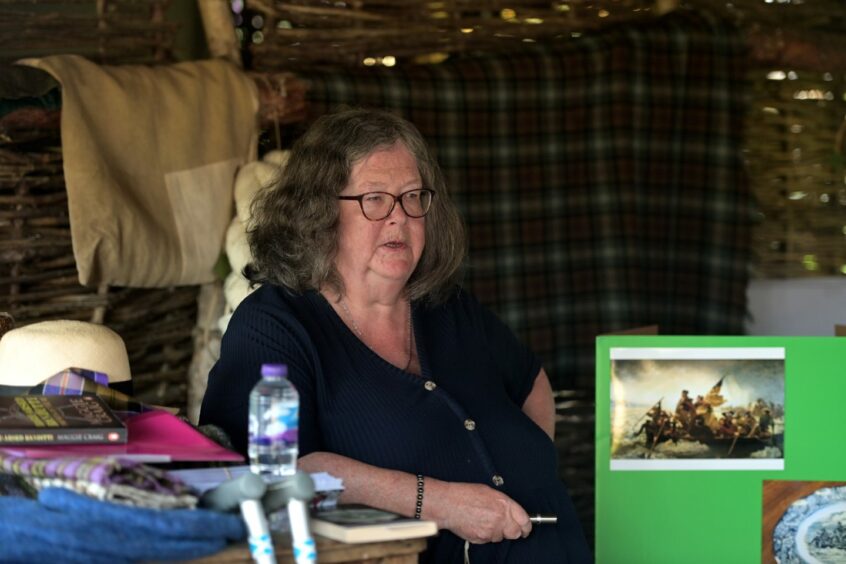
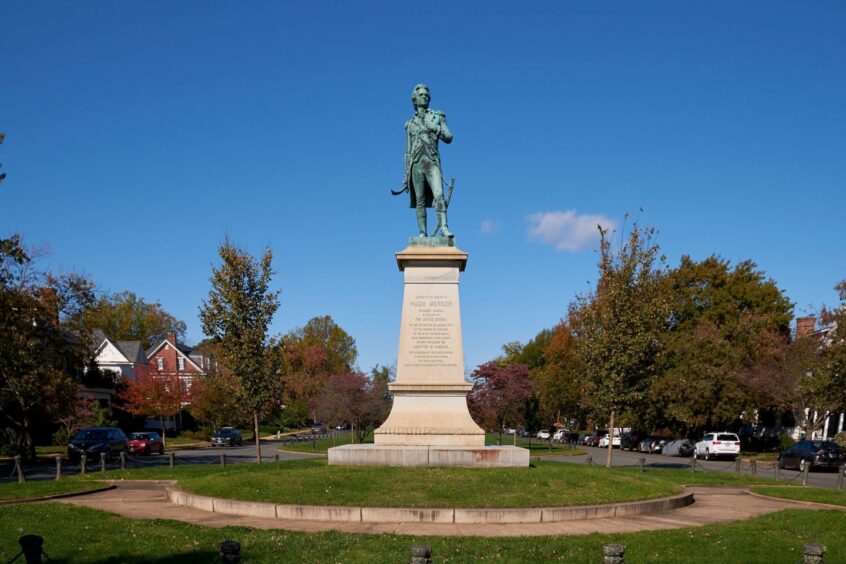
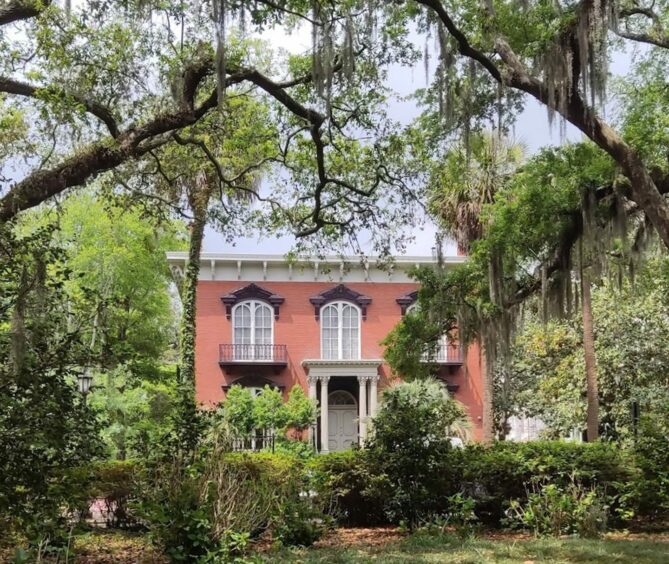

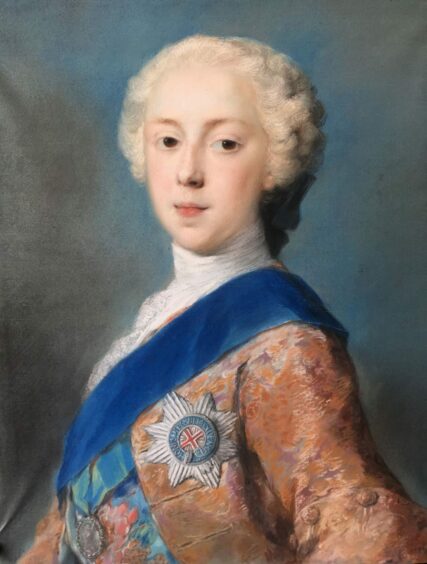
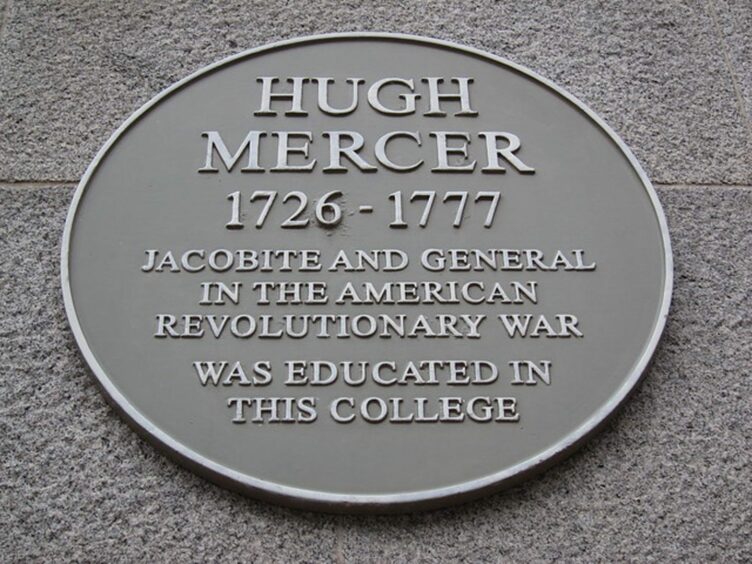
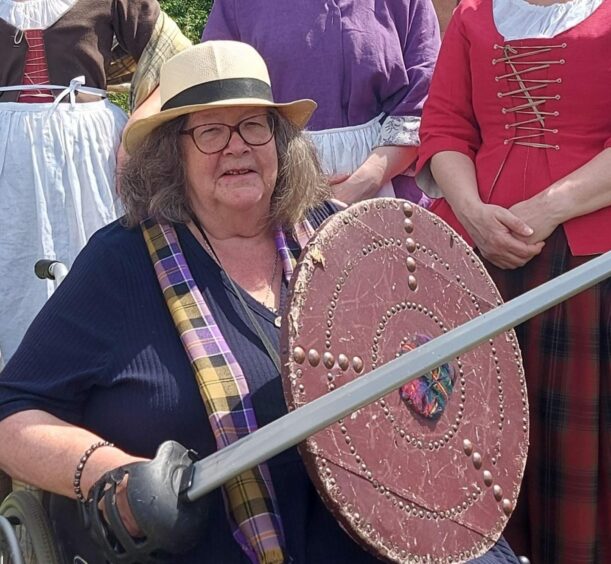

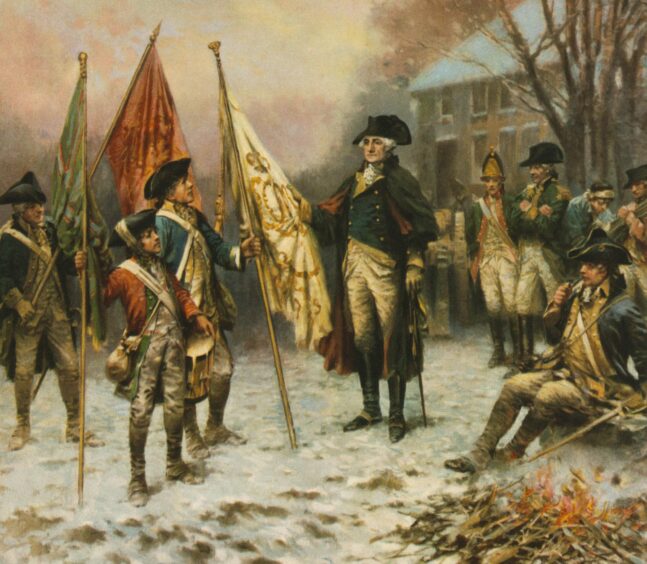
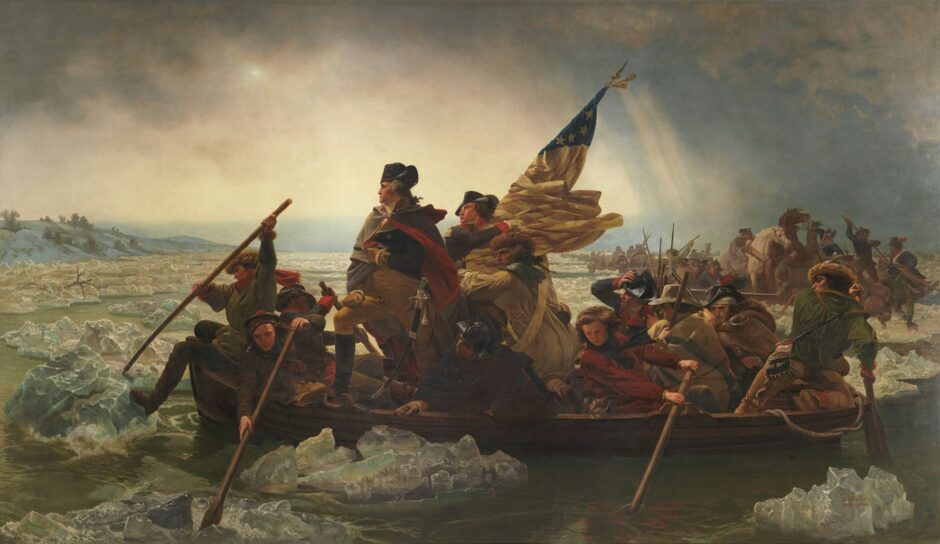
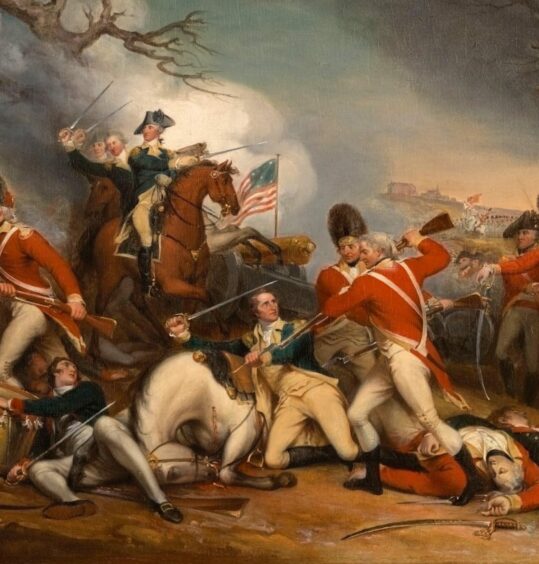
Conversation